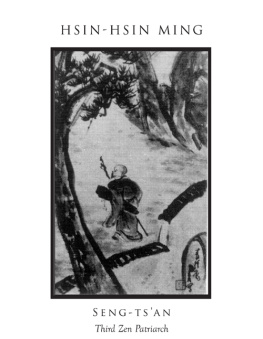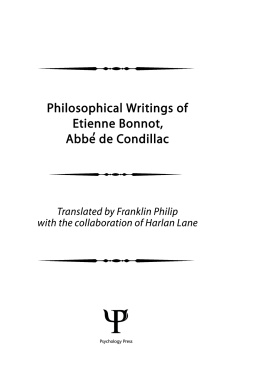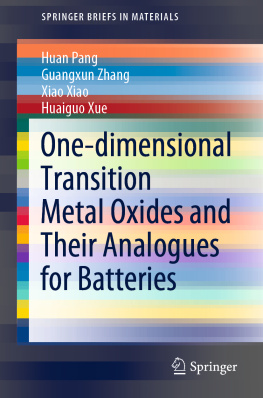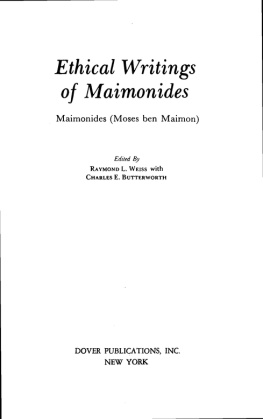Timoteus Pokora - Hsin-Lun (New Treatise) and Other Writings by Huan T’an (43 B.C. – 28 A.D.)
Here you can read online Timoteus Pokora - Hsin-Lun (New Treatise) and Other Writings by Huan T’an (43 B.C. – 28 A.D.) full text of the book (entire story) in english for free. Download pdf and epub, get meaning, cover and reviews about this ebook. year: 1975, publisher: Kenneth G. Lieberthal and Richard H. Rogel Center for Chinese Studies, genre: Science. Description of the work, (preface) as well as reviews are available. Best literature library LitArk.com created for fans of good reading and offers a wide selection of genres:
Romance novel
Science fiction
Adventure
Detective
Science
History
Home and family
Prose
Art
Politics
Computer
Non-fiction
Religion
Business
Children
Humor
Choose a favorite category and find really read worthwhile books. Enjoy immersion in the world of imagination, feel the emotions of the characters or learn something new for yourself, make an fascinating discovery.
- Book:Hsin-Lun (New Treatise) and Other Writings by Huan T’an (43 B.C. – 28 A.D.)
- Author:
- Publisher:Kenneth G. Lieberthal and Richard H. Rogel Center for Chinese Studies
- Genre:
- Year:1975
- Rating:4 / 5
- Favourites:Add to favourites
- Your mark:
- 80
- 1
- 2
- 3
- 4
- 5
Hsin-Lun (New Treatise) and Other Writings by Huan T’an (43 B.C. – 28 A.D.): summary, description and annotation
We offer to read an annotation, description, summary or preface (depends on what the author of the book "Hsin-Lun (New Treatise) and Other Writings by Huan T’an (43 B.C. – 28 A.D.)" wrote himself). If you haven't found the necessary information about the book — write in the comments, we will try to find it.
Timoteus Pokora: author's other books
Who wrote Hsin-Lun (New Treatise) and Other Writings by Huan T’an (43 B.C. – 28 A.D.)? Find out the surname, the name of the author of the book and a list of all author's works by series.
Hsin-Lun (New Treatise) and Other Writings by Huan T’an (43 B.C. – 28 A.D.) — read online for free the complete book (whole text) full work
Below is the text of the book, divided by pages. System saving the place of the last page read, allows you to conveniently read the book "Hsin-Lun (New Treatise) and Other Writings by Huan T’an (43 B.C. – 28 A.D.)" online for free, without having to search again every time where you left off. Put a bookmark, and you can go to the page where you finished reading at any time.
Font size:
Interval:
Bookmark:

THE UNIVERSITY OF MICHIGAN
CENTER FOR CHINESE STUDIES
MICHIGAN PAPERS IN CHINESE STUDIES
NO. 20
HSIN-LUN (NEW TREATISE) and Other Writings by Huan Tan (43 B.C. - 28 A.D.)
An Annotated Translation with Index
by
Timoteus Pokora
Ann Arbor
Center for Chinese Studies The University of Michigan
1975
Open access edition funded by the National Endowment for the Humanities/Andrew W. Mellon Foundation Humanities Open Book Program.
Copyright 1975
by
Center for Chinese Studies The University of Michigan
Printed in the United States of America
ISBN 978-0-89264-020-1 (hardcover)
ISBN 978-0-472-03803-9 (paper)
ISBN 978-0-472-12744-3 (ebook)
ISBN 978-0-472-90139-5 (open access)
The text of this book is licensed under a Creative Commons Attribution-NonCommercial-NoDerivatives 4.0 International License: https://creativecommons.org/licenses/by-nc-nd/4.0/
ACKNOWLEDGMENTS
I owe much to those who have worked on my manuscript since 1970. My sincere appreciation must be extended to Professors Chun-shu Chang, Donald J. Munro, and Rhoads Murphey for their contributions of time and expert advice through all stages of the manuscript preparation. I would also like to thank Christina Whitman and Leslie Swartz Shalen who edited the text for content and grammatical continuity. Finally, my thanks to Judy Dudley, the typist, and Lilly Chai, the calligrapher, for their excellent work.
CONTENTS
Chapter
INTRODUCTION
Better known in his own times than later, Huan Tan was a scholar-official, independent in his thought and unafraid to criticize orthodox currents of his time. He and his more famous contemporaries Liu Hsin, Yang Hsiung, and Wang Chung were scholars of the Old Text exegesis of the Classics.
Huan Tan (ca. 43 B.C.-28 A.D.) lived in the disturbed period around the time of the Han interregnum and witnessed political crises, uprisings, and civil war. He observed the reigns of the Emperors Yuan (4833 B.C.), Cheng (33-7 B.C.), Ai (7-1 B.C.), and Ping (1 B.C.-6 A.D.). He was close to Wang Mang during his quest for power and the establishment of his Hsin dynasty. Even at the court of the victorious Kuang-wu (25-56 A.D.), the first emperor of the restored Han dynasty, Huan Tan remained an honorary official and a well-known scholar. But he never belonged to the small group of decision-makers or highest advisors and this may account for his ability to retain a position in the court throughout these political changes.
Much of the information we have on Huan Tan comes from Fan Yeh, the author of the Hou Han shu . In addition, many important facts about Huan Tan and his times are found in the fragmentsl of his principal work, Hsin-lun .
The Hsin-lun differs from other books on political criticism in that it does not deal primarily with history but takes many examples from contemporary social and political life. Unfortunately, since the greater part of his writings is lost, a full evaluation of his ideas is rather difficult.
While belonging to the Old Text group of court officials and scholars, Huan Tan differed radically from them in his stress on direct knowledge, in his range of practical experience, and in his outspoken criticism of popular opinions. He was not a systematic philosopher, but his ideas were influential in the return to a more worldly conception of Confucianism.
Huan Tan probably came from Anhwei province. His father was a Prefect of Imperial Musicians, and like him, Huan Tan spent many years as an official of music. But his unorthodox concept of music and his musical talents on the chin (zither) often involved him in conflicts with the emperor under whom he was serving. As a result, his career was frequently interrupted. It may have been Huan Tanfs unsuccessful career that motivated his interest in the rise of Wang Mang. However, even if a modest new opportunity did open up for him around the time of Wang Mang!s accession, he did not achieve any important post and certainly had no direct influence on Wang Mang.
By the end of Wang Mangs reign Huan Tan was sixty-five years old. He remained at the court but soon became embroiled in a conflict with the Emperor Kuang-wu. An experienced and courageous scholar-official, Huan Tan continued his criticism under the new Emperor. He finished his Hsin-lun and sent it to the Emperor, as it was written as a handbook on political science for a new ruler. From extant memorials and their replies we know that Kuang-wu found Huan Tanfs political views incompatible with his own. In particular, Emperor Kuang-wu was infuriated over Huan Tanfs criticism of the prognostication texts because the Emperor believed that it was by virtue of the guidance of these texts that he had ascended the throne. While Huan Tfan said again with insistence that the prognostications were contradictory to the canonical books,2 Emperor Kuang-wu claimed that their reliability was based on the Classics and on Confucius himself. Huan Tan was condemned to be beheaded immediately, but was pardoned later after lengthy kowtowing. He did not, however, go unpunished. He was exiled to Liu-an in Anhwei where he was to be an Assistant Administrator. The aged scholar was unable to endure the long trip and died on the way.
The case of Huan Tan established a precedent.
For the first time the Emperor was directly informed that deceitful people may falsely praise the prognostication texts in order to mislead the ruler. Secondly, the furious reaction of the Emperor who had declared the prognostications authentic served as a warning to other scholars to be more cautious in their utterings on the subject. Some influential Old Texters did not heed these admonitions and later succeeded in imposing their ideas on the Emperor Chang (76-88 A.D.). In 85 A.D., while on an imperial inspection tour of the East, Emperor Chang sent a messenger to make a sacrifice at Huan Tans tomb. Thus the scholars critical attitude towards the prognostication texts and his contribution to Han thought was officially, if posthumously, recognized and sanctioned.
His Thought
Huan Tans ideas played a large role in the development of Han thought. It was Huan Tan who, together with his follower Wang Chung, started the critical trend of thought by attacking the New Text school and by viewing with skepticism the idealized past. Along with Yang Hsiung, all three philosophers were Confucian but had some penchant for Taoism. Huan Tans attitude towards Confucius was reserved, even critical. He rarely referred to Confucius as a sage. This anti-traditional tendency is illustrated in quotations from Hsin-lun . Huan Tan said to Yang Hsiung: If a sage should appear to future generations, people will merely realize that his talents are greater than theirs, but many will not be able to tell whether he is really a sage or not.3 Huan Tan said further: A sage appears once in a thousand years.4 He questioned how people will know who is the proper sage.
In fact modern scholarship has shown that Confuciuss reputation is out of proportion with the facts of his career. An early proponent of this view, Huan Tan stated: Confucius was an ordinary man, but he became eminent and his hand became famous.5 Huan Tan had almost nothing positive to say about Confuciuss merit, his ideas, or his contributions to scholarship and the Classics. He challenged the traditional praise bestowed upon the Chun-chiu , which was considered to be a work by Confucius. I have written the Hsin-lun in order to examine and discuss the past and the present, but I also wish to promote successful government. How does this differ from the praise and blame of the Chun-chiu! 6 Excessive adoration of the past, the Classics and sages, was an object of his criticism:
Font size:
Interval:
Bookmark:
Similar books «Hsin-Lun (New Treatise) and Other Writings by Huan T’an (43 B.C. – 28 A.D.)»
Look at similar books to Hsin-Lun (New Treatise) and Other Writings by Huan T’an (43 B.C. – 28 A.D.). We have selected literature similar in name and meaning in the hope of providing readers with more options to find new, interesting, not yet read works.
Discussion, reviews of the book Hsin-Lun (New Treatise) and Other Writings by Huan T’an (43 B.C. – 28 A.D.) and just readers' own opinions. Leave your comments, write what you think about the work, its meaning or the main characters. Specify what exactly you liked and what you didn't like, and why you think so.







